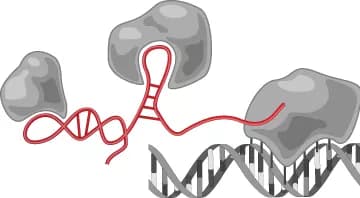
Need For Speed Makes Genome Editing Efficient, If Not Better
Rice University researchers have developed a computational model to quantify the mechanism by which CRISPR-Cas9 proteins find their genome-editing targets.
Anatoly Kolomeisky, a Rice professor of chemistry and chemical and biomolecular engineering, and alumnus Alexey Shvets adapted a system they developed earlier to show how proteins generally find their biological targets. They hope the revised model will help unlock the remaining mysteries of CRISPR.
In its natural state, CRISPR, which stands for "clustered regularly interspaced short palindromic repeats," is the biological mechanism by which bacteria protect themselves from viral infections. The bacteria incorporate a copy of the foreign DNA and build a record of all those that invade. They refer to that record when new invaders are detected and use it to destroy them.
In recent years, researchers have begun to adapt the mechanism for use in genome editing, which has the potential to cure disease and enhance organisms, including humans. But a stumbling block has been the risk that CRISPR-Cas9 proteins, one of the systems that utilize the CRISPR approach, will cut and replace the wrong target sequences, introducing mutations.
The Rice model described in the Biophysical Journal found it likely that CRISPR-Cas9 locates good targets more efficiently when these off-target edits are allowed to happen, because the proteins don't waste time disassociating from off-targets to continue searching.
That may or may not be a good thing, but it's certainly worthy of study, Kolomeisky said.
"The error rate (off-target cutting) is sometimes 10-20 percent," he said. "We have two ideas about this: One is that viruses mutate very quickly and maybe bacteria are trying to cut targets that are only slightly mutated as a way to be more flexible. The other is that there are proteins that can correct mistakes, so if there aren't many wrong cuts, the system can tolerate them.
"What's come from our model is that we think off-target cutting really can help on-target cutting be faster."
Kolomeisky said his model is a simple step toward figuring out the dynamics of CRISPR editing. "CRISPR-Cas9 is the most popular variation because it has only one protein and is easier, biologically, to work with," he said.
The Rice lab developed its original model to learn how proteins slide along DNA to find targets and trigger processes like gene transcription. Kolomeisky noted CRISPR pioneer Jennifer Doudna discovered that CRISPR-Cas9 does not seek in the same way. "She found it doesn't slide anywhere on the DNA," he said.
Instead, according to Doudna and her team, the protein initially recognizes three-nucleotide PAM (for protospacer adjacent motif) sequences that mark the location of potential targets. "CRISPR finds and binds to PAM and then its associated RNA explores the adjacent DNA to see if this is the target," Kolomeisky said. "If it is, the protein starts to cut. If not, it disassociates and looks elsewhere."
In Doudna's subsequent experiments with PAM sequences removed, CRISPR-Cas9 proteins could not find their targets at all. So PAMs have an important role and are not just a generic spacer, he said. "As soon as I read this, I understood we could use our model here as well."
The theoretical model looks at first-passage processes -- those that happen when a system crosses a physical or chemical threshold, like finding a relevant PAM -- to track CRISPR-Cas9 proteins inserted into a cell as they first survey PAM sequences and then, while bonded to PAMs, search for the DNA target that matches the Cas9's RNA.
They found CRISPRs that avoid off-target cuts by disassociating from "wrong" DNA take longer to settle than one that simply cuts off-targets. "Going to the wrong PAM takes time," Kolomeisky said. "Our calculation shows CRISPR can find real targets faster when it sometimes cuts in the wrong places. The fraction that goes to the right targets may be smaller, but you will cut them eventually.
"It's a simple model and exactly solvable," Kolomeisky said. "If somebody wants to test, the model can provide specific predictions and in some cases offer trends for what should be observed." What remains missing from the model is the ability to see whether the RNA key recognizes its target simultaneously -- binding to the DNA all at once -- or sequentially, nucleotide by nucleotide.
"The most impressive thing about CRISPR is not the discovery of an immune system in bacteria but the fact that this has created a revolution in biotechnology, because it means that in any cell we can cut any DNA at a specific location, very precisely," Kolomeisky said. "I hope our work will stimulate more fundamental studies, because I like the CRISPR method very much. But I am not happy when people apply it without understanding how it works at the molecular level."
Shvets is now a postdoctoral researcher at the Massachusetts Institute of Technology. Kolomeisky is a professor of chemistry and of chemical and biomolecular engineering.
The Welch Foundation, the National Science Foundation and Rice's Center for Theoretical Biological Physics supported the research.
Materials provided by Rice University. Note: Content may be edited for style and length.
Disclaimer: DoveMed is not responsible for the accuracy of the adapted version of news releases posted to DoveMed by contributing universities and institutions.
References:
Alexey A. Shvets, Anatoly B. Kolomeisky. (2017). Mechanism of Genome Interrogation: How CRISPR RNA-Guided Cas9 Proteins Locate Specific Targets on DNA. Biophysical Journal. DOI: 10.1016/j.bpj.2017.08.013
Related Articles
Test Your Knowledge
Asked by users
Related Centers
Related Specialties
Related Physicians
Related Procedures
Related Resources
Join DoveHubs
and connect with fellow professionals

0 Comments
Please log in to post a comment.